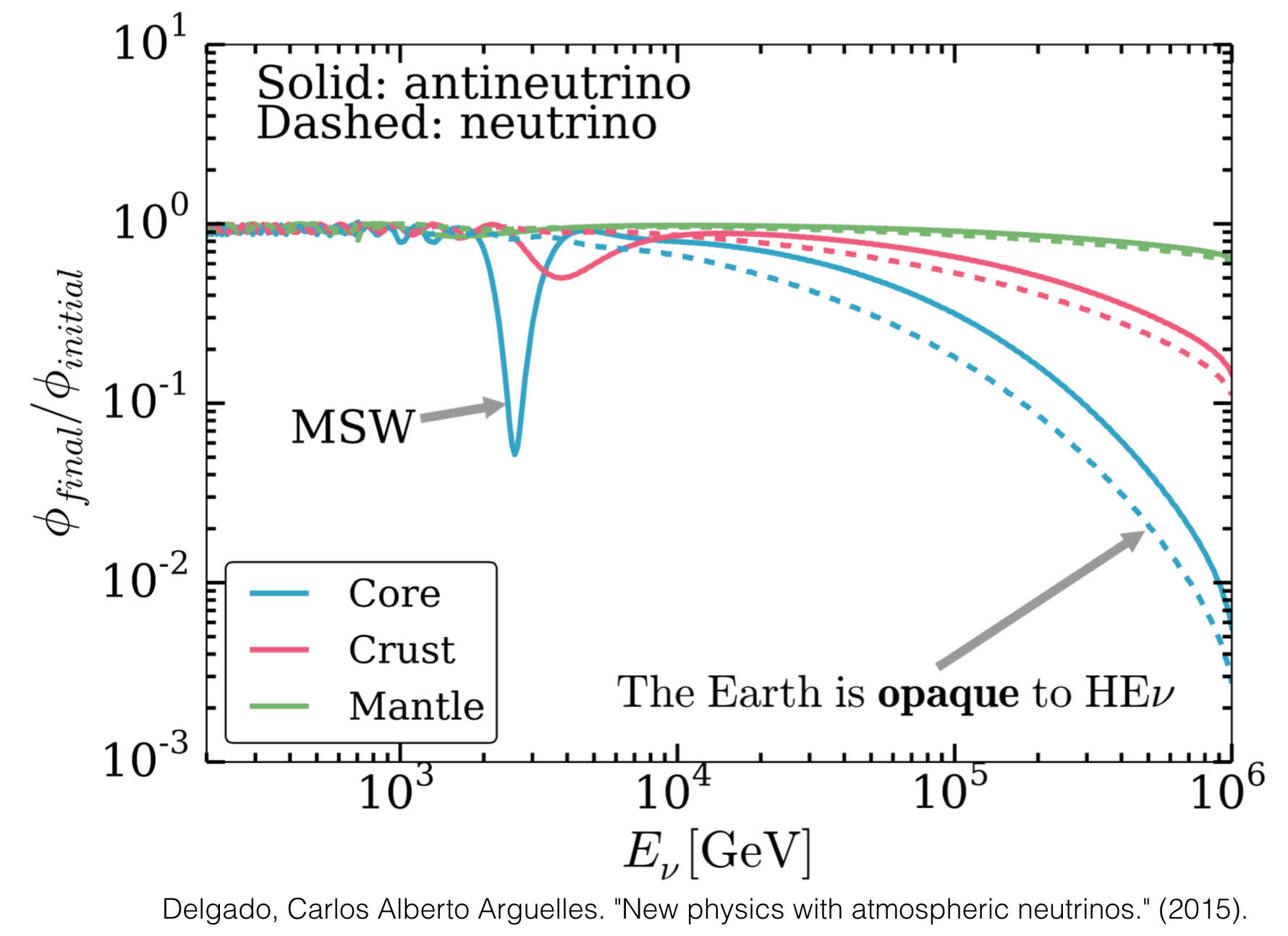


The IceCube detector has a new and innovative way to search for sterile neutrinos by looking at high-energy neutrinos passing through the core of the earth. While most sterile neutrino searches study low energy neutrinos close to their source, IceCube detects high-energy neutrinos that originate on the other side of the earth. The high densities in the earth’s core magnify the effect of a sterile neutrino, making this analysis very sensitive to new physics.

As neutrinos pass through the Earth, the flavour eigenstates experience different potentials. This is due to what is known as the MSW effect. The difference in potentials arise from the fact that electron flavour neutrinos can forward scatter off of electrons, while the muon and tau flavour neutrinos do not -- since the Earth number density of electrons is vastly greater than the number density of muons and taus. In a model with one sterile neutrino, the coherent forwards scattering of anti-electron flavour neutrinos, will cause a resonance a near extincting of TeV scale neutrinos as they pass through the Earth's core. It is this extinction that we are looking for.

What we are therefore searching for is the disapperance of ~TeV scale muon flavoured atmospheric neutrinos as they pass through the core of the earth. This requires extensive monte carlos simulation as well as a thurough understanding of the systematic uncertainties associated with the IceCube detector.